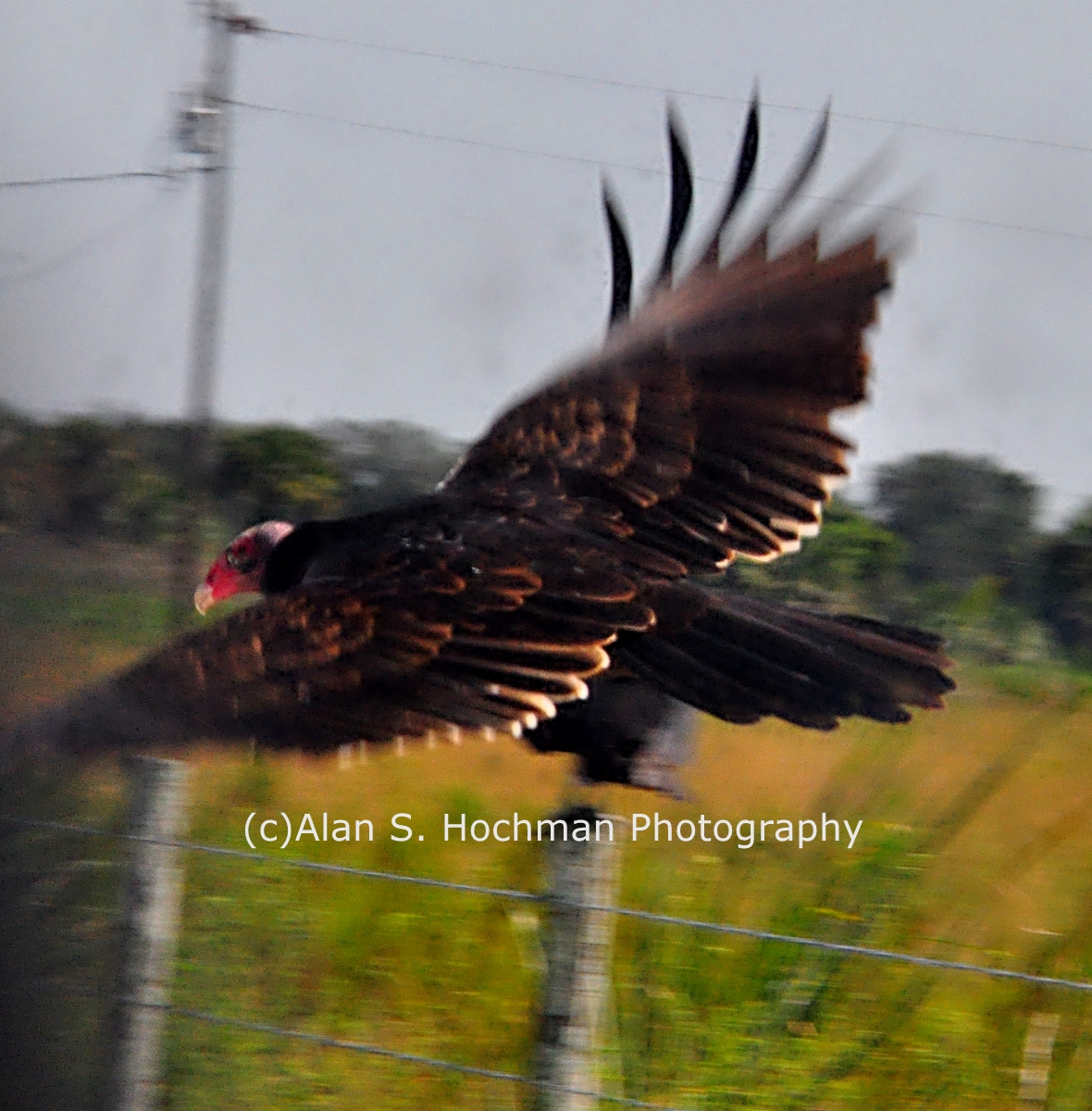WILDLIFE PHOTOGRAPHY – DINNER ISLAND RANCH WMA, FL
This is a photograph of a Turkey Vulture in flight and was taken at Dinner Island Ranch Wildlife Management Area in Florida. The gear used in this photo was a Nikon D90 camera body attached to a Tamron 2x teleconverter and Tamron 28-300mm zoom lens.
Turkey vulture or Cathartes aura, is one of the most common vultures found in America. Vultures are generally categorized as new world and old world vultures. The group of new world vultures belongs to the family, Cathartidae, which includes black vulture, the King vulture, storks and California condon, in addition to turkey vulture. On the other hand, the old world vultures include eagles, kites, hawks and buzzards, which are the members of the family Accepitridae.
The new world vultures can be differentiated from their old world counterparts by the structure of their beaks and feet. The old world vultures possess strong beaks and their feet are characterized by sharp hooked claws. On the Contrary, the beak of the new world vultures are weaker and their feet resemble to those of chickens, which allows them to hold the food in place but they cannot lift or carry it to some other place.
Turkey Vulture Facts
Turkey vultures are widely found in North America and are also known as turkey buzzards. The adult turkey vultures can weigh up to 6 pound, reaching the length of 25 to 32 inches. The wingspan of the vultures can be about 6 feet. The name turkey is given to them due to the bald, red head that closely resembles that of a wild turkey. Their feet closely resembles the feet of a chicken, which they cannot use to lift or carry food. Instead, their feet are especially designed to hold food in place while eating. Apart from these, turkey vultures have several other distinguishing characteristics, regarding their habit, behavior, and food and habitat. So, find out some fun facts about the vultures below.
They generally prefer wide open spaces, especially coastline, deserts and plains. However, they can live in a wide range of habitats, including tropical and temperate forests and grasslands. Turkey vultures are one of the most widely found new world vultures in United States. They can also be found along the east and west coast of North Canada and Central South America.
Vultures are basically scavengers, that feed on carrion or carcasses of dead animals. So, like other vultures, turkey vultures too survive on carrion and cannot kill their prey. They usually thrust their heads inside the carcass. Here, their bald head serves an important purpose, while they eat carrion. The fact that their head is bald keeps it clean, while they stick their head inside the body cavity of the carcass. If there would have been feathers on their head, these would have caught unwanted pieces of meat, creating a favorable environment for the growth of bacteria and other harmful microorganisms. Turkey vultures have an extraordinary sense of smell, which enables them to find out a carcass just within 24 hours of its death. They are also empowered with a sharp eye sight, which helps them to search food. If need arises, turkey vultures can also live on vegetation.
Turkey vultures usually lay 1 to 3 eggs in a year in the spring season. The incubation period is generally 38 to 41 days, after which the eggs hatch. All the responsibilities for incubating as well as caring the young ones, are shared by the both parents. The young ones become capable of flying or they fledge within 70 to 80 days after they hatch. Turkey vultures do not build nest for laying eggs; instead they lay eggs in caves or on the ground. An adult turkey vulture can live up to 16 years in wild, while in captivity, they can survive till 30.

Way cool
COOL
COOL